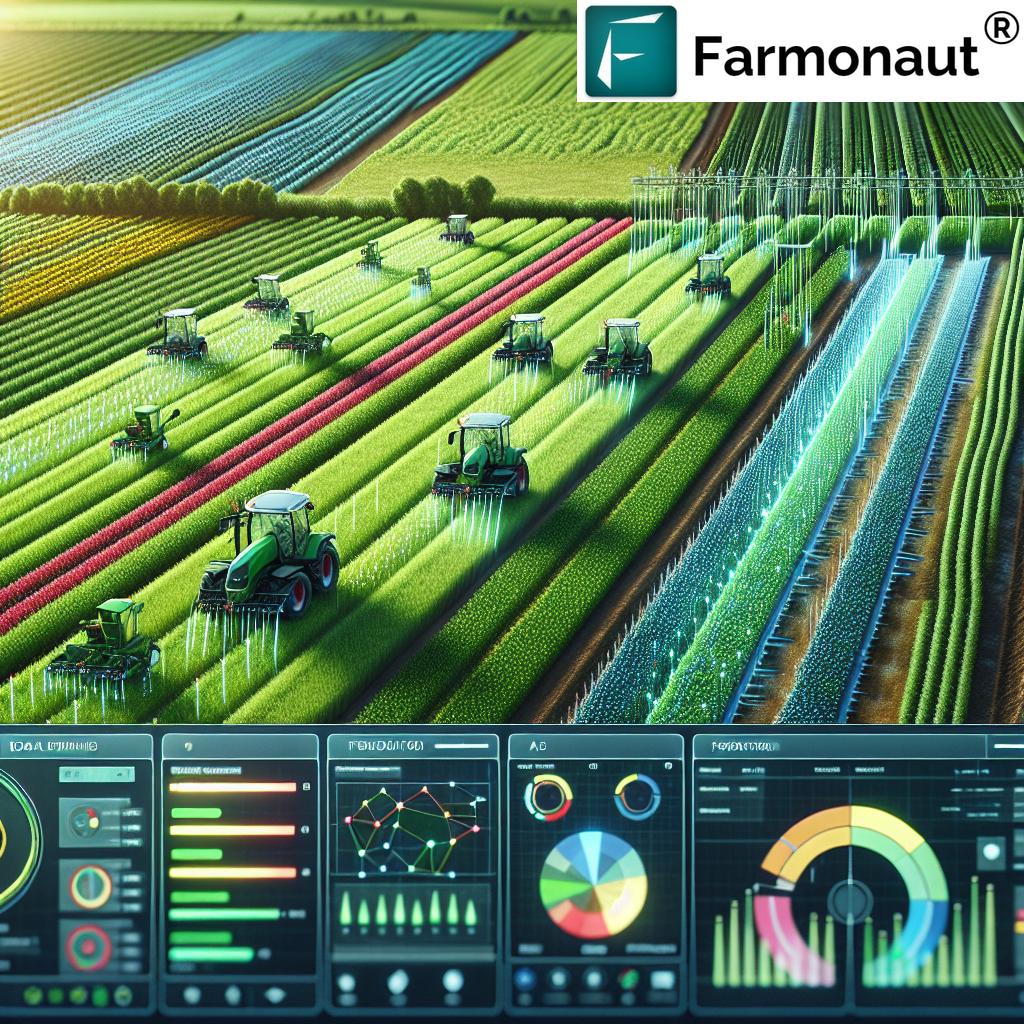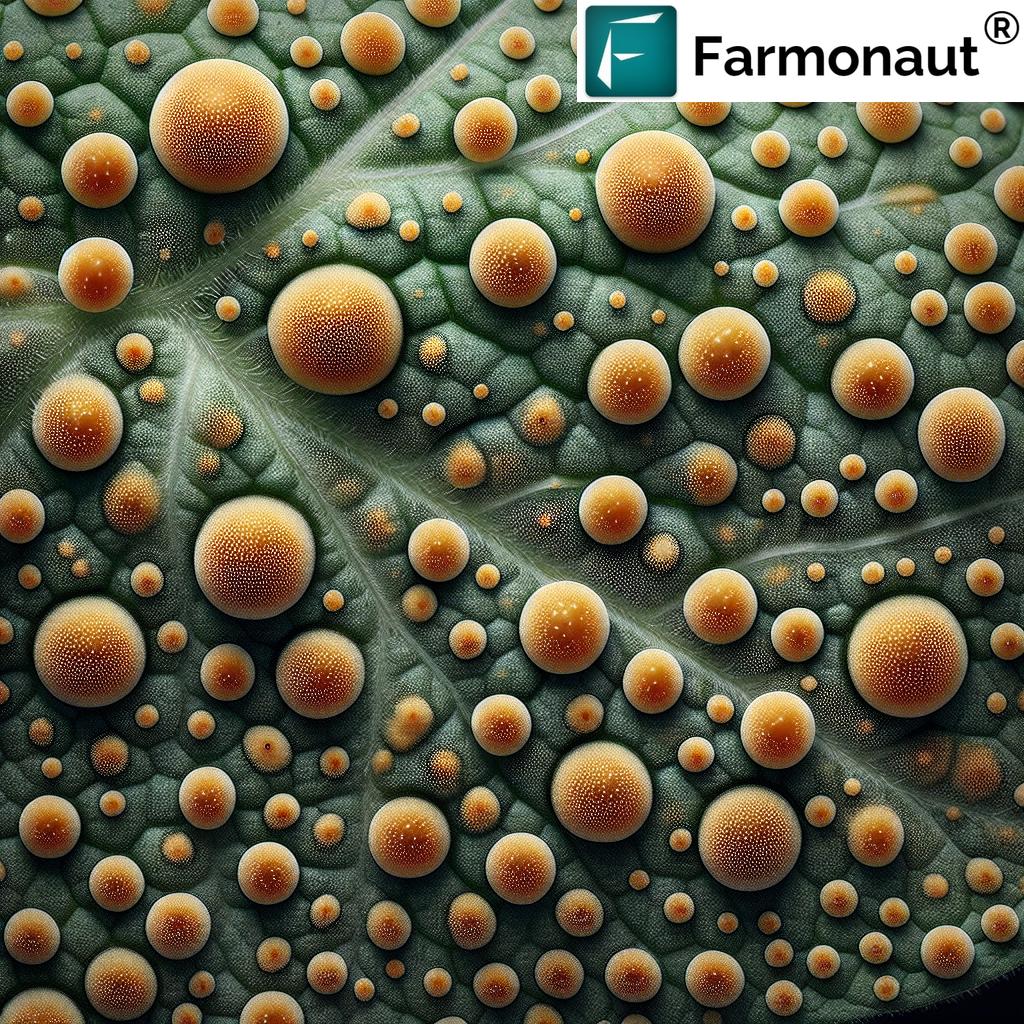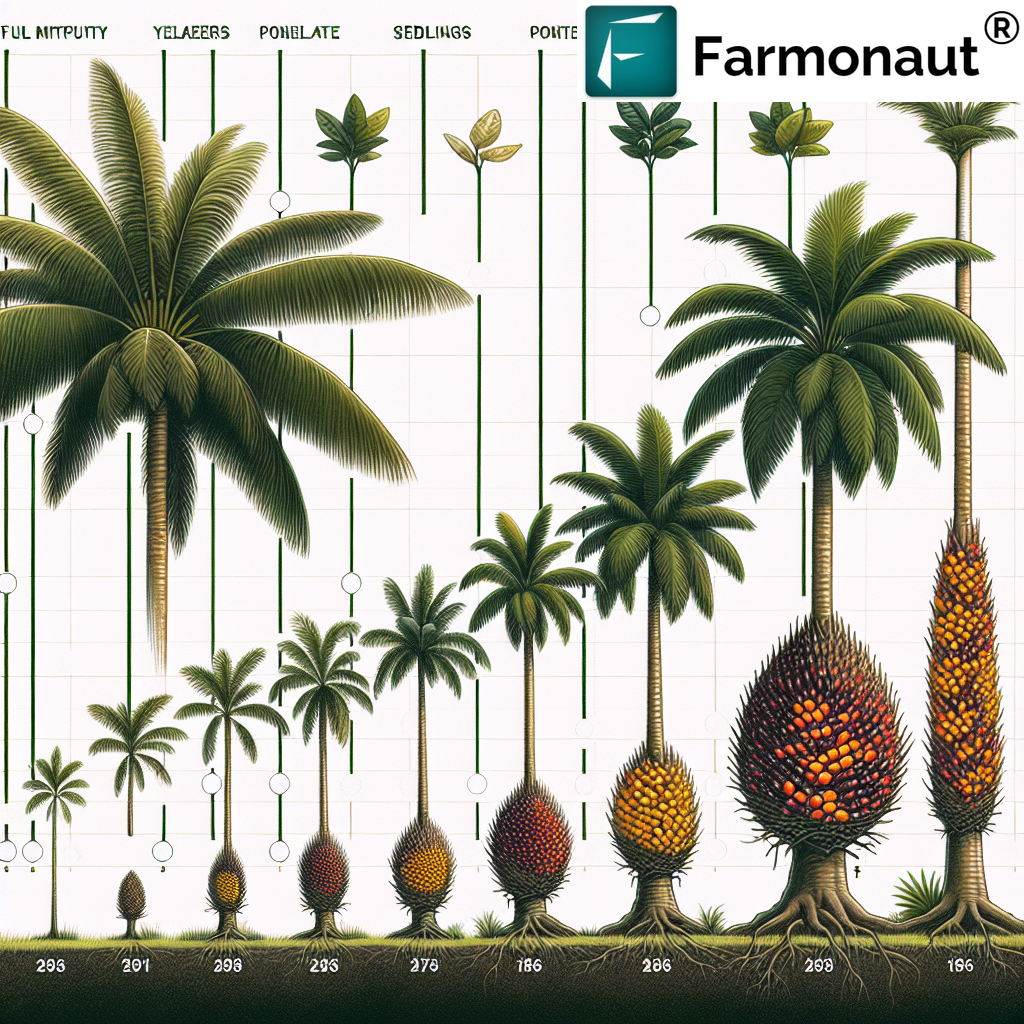How Can Constellations Help with Farming: 2025 Guide
“In 2025, over 60% of urban farms use constellation-based data for crop planning and resource allocation.”
Table of Contents
- The Remarkable Transformation of Agriculture in 2025
- How Can Constellations Help with Farming?
- How Do Drones Help with Agriculture?
- How Can Urban Farming Help Communities?
- Resource Management: What Resources Help with Farming?
- Technologies Transforming Agriculture in 2025
- Farmonaut: Pioneering Satellite Technologies for Modern Agriculture
- Farmonaut Solutions & Use Cases
- The Future of Farming: Embracing Innovation in 2025 and Beyond
- FAQ: Constellations, Drones, Urban Farming, and Resource Management in Agriculture
- Farmonaut Subscription Plans
The Remarkable Transformation of Agriculture in 2025
In recent years, agriculture has witnessed a remarkable transformation driven by groundbreaking technologies and innovative farming practices. Facing soaring global population growth and intensifying climate change, the need for more sustainable and productive methods has never been greater.
Today, farmers, agri-businesses, and even governments are leveraging novel tools, techniques, and data-driven systems to address challenges and enhance sustainability, resource efficiency, and food security. But what are the true game-changers in 2025? Let’s explore how constellations, drones, and urban farming—along with improved resource management—are shaping agriculture’s future.
- How can constellations help with farming? Discover the power of satellite networks in real-time crop and soil monitoring.
- How do drones help with agriculture? See how advanced drone technologies deliver precision farming and rapid field insights.
- How can urban farming help communities? Reimagine urban food systems with sustainable, localized crop production.
- What resources help with farming? Delve into smarter resource management with AI-driven, water-savvy, and blockchain-supported systems.
How Can Constellations Help with Farming?
Satellite constellations are revolutionizing modern agriculture and farming help worldwide in 2025. These networks of low Earth orbit (LEO) satellites form the backbone of next-generation monitoring and decision-making systems for farmers and agricultural stakeholders.
1. Real-Time, High-Resolution Crop Monitoring
By deploying coordinated constellations of satellites, precise imagery and multispectral data are delivered to farm management platforms and mobile apps at unprecedented speeds. This allows for:
- Vast, real-time monitoring of agricultural lands across the globe
- Detection of subtle changes in crop health, moisture, and nutrient levels
- Targeted analysis for pests, disease outbreaks, and weed infestations
- Reducing waste by optimizing irrigation, fertilization, and resource allocation
High-Impact Applications of Constellations in Farming
- Precision Agriculture: GNSS-enabled precision farming with autonomous machinery ensures efficient seeding, spraying, and harvesting
- Yield Forecasting: Constellation data accurately predicts seasonal yields, allowing farmers and businesses to plan ahead for market and supply chain dynamics
- Remote Diagnostics: Regular satellite passes highlight areas under stress—such as drought, pests, nutrient deficiency—faster than ground-based scouting
Key Benefits of Satellite Constellations in 2025
- Unprecedented accuracy in monitoring large farm areas and small fields alike
- Detailed, multispectral insights empower farmers to take informed, timely action—improving overall yield and reducing losses
- Efficient resource deployment for fertilization and irrigation, minimizing environmental impact
Constellations allow not only large agricultural players but also smaller, local farmers to harness satellite-driven monitoring, leveling the global playing field.
Want real-time, detailed satellite monitoring for your crops?



Want to automate your agri-data workflow? Explore Farmonaut’s Satellite Data API and API Developer Docs for seamless integration of constellations, crop monitoring, and weather analytics results into your agriculture technology stack.
How Do Drones Help with Agriculture in 2025?
Drones have become one of the most indispensable tools for modern farmers, integrating seamlessly with constellation-driven imagery and AI analytics for farming help.
-
Rapid and Frequent Aerial Surveys
- Drones equipped with advanced sensors and high-resolution cameras quickly scan large and small fields, detecting subtle changes in crop health and identifying pests before they spread.
- Compact drones can access areas traditional machinery cannot reach, making targeted applications easy and effective.
-
Precision Spraying and Targeted Application
- Drones precisely apply fertilizers, pesticides, and herbicides only where needed, dramatically reducing waste and operational costs.
- This method limits environmental impact and supports sustainable practices.
-
AI Analytics and Predictive Interventions
- By integrating real-time aerial data with AI-powered farm management platforms, drones can detect issues earlier and forecast crop yields with increased accuracy.
- This streamlines farm management and supports proactive interventions against pests, diseases, and weather-induced stress.
Main Advantages of Drones in Modern Agriculture
- Faster Response: Farmers can act within hours of identifying crop issues.
- Enhanced Precision: Targeted treatment means less resource use and maximum crop health benefit.
- Continuous Data Flow: Drones fill the gap between satellite passes, offering continuous, field-level monitoring.
Drones complement both traditional and satellite agritech methods, making them central to advanced agricultural systems that boost productivity, sustainability, and profitability in 2025.
“Constellation mapping improved seasonal yield predictions by 35% in tech-driven agricultural regions in 2025.”
How Can Urban Farming Help Communities?
The 21st-century surge toward urban farming marks one of the most significant shifts in global agriculture. With more than half the world’s population living in cities by 2025, farming help is increasingly taking the shape of vertical farms, rooftop gardens, and hydroponics systems within dense urban areas.
Key Ways Urban Farming Helps Communities
- Reduces ‘Food Miles’ and Emissions: Urban-grown crops reach consumers quickly, reducing transportation emissions and increasing freshness.
- Improves Food Security and Access: Urban farms supply nutritious, affordable produce directly to underserved communities, lowering food deserts.
- Fosters Community Engagement: City gardens and vertical farms create green jobs, educational opportunities, and a shared responsibility for food and health.
- Year-Round Production: Controlled environment agriculture (CEA) uses LED lighting, climate controls, and accurate water and nutrient delivery to maximize productivity regardless of local weather.
Urban Farming Technologies: Smarter, Greener Cities
- Satellite and Drone-Enhanced Planning: Urban farms now use constellation-based data for crop planning and resource allocation.
- Automation & AI Systems: Automated hydroponics and vertical farming use AI analytics and real-time sensors to optimize growing conditions in small urban spaces.
- Blockchain Traceability: Secure and transparent supply chains (read more about traceability with Farmonaut).
Resource Management: What Resources Help With Farming?
What resources help with farming is a question transforming post-2025 agriculture. Effective resource management is now crucial for sustainability and crop profitability.
Major Resource Management Innovations
- Water Efficiency: Advanced drip irrigation, IoT-enabled sensor systems, and AI-driven scheduling reduce water waste and boost yield.
- Soil Health Monitoring: Multispectral satellite imagery and AI models deliver deep insights into soil organic matter, compaction, moisture, and nutrient levels.
- Digital Decision Tools: Modern farm management apps combine weather forecasts, satellite data, markets, and tailored best practices to inform daily action.
- Biofertilizers and Organic Inputs: Emphasis is shifting toward bio-based, regenerative agricultural practices over synthetic chemicals for boosting soil health and resilience.
-
Blockchain for Transparency: Trustworthy records for origin and movement of crops and farm resources reduce fraud and enable sustainability claims.
Blockchain-based traceability platforms like those from Farmonaut secure supply chains and enable consumers to verify claims about food safety and authenticity.
How Does Technology Improve Resource Use?
- Real-Time Environmental Monitoring: Platforms now measure carbon footprints and environmental impacts in the field aged by satellites, supporting regulations and climate-smart commitments. (Explore Farmonaut’s carbon impact monitoring.)
- Precision Fleet and Equipment Management: GPS and GNSS-based systems route tractors and drones for efficient resource delivery, lowering costs and maximizing productivity (see Farmonaut’s fleet management solutions).
- Scalable, Data-Driven Systems: Tools such as Farmonaut’s suite monitor fields all the way to harvest, connecting farmers, agronomists, lenders, and buyers for complete, efficient agricultural development.
Technologies Transforming Agriculture in 2025
Farmonaut: Pioneering Satellite Technologies for Modern Agriculture
As the agricultural world transitions towards sophisticated monitoring and digital management, Farmonaut stands at the forefront. Farmonaut delivers accessible, real-time, and affordable satellite-driven insights across the global agriculture sector with these key features:
- Satellite-based monitoring for crop health, soil status, and resource use
- AI-driven advisory platform (Jeevn AI) for real-time decisions on crop plans and weather strategies (See Jeevn AI in action)
- Blockchain-based traceability ensuring transparency and trust in food supply chains
- Fleet and resource management tools to improve logistics and equipment efficiency
- Environmental and carbon impact monitoring for sustainability, accessible via apps and APIs
Farmonaut Solutions & Use Cases
- Large Scale Farm Management: Use Farmonaut Agro Admin App for organization-wide satellite-based analysis, health monitoring, and developmental planning across fields and farms.
- Crop Plantation & Forest Monitoring: Plan and monitor plantations or forestry initiatives efficiently via real-time satellite tools. Learn more here.
- Loan and Insurance Made Simple: Get satellite-based crop verification for easier loan and insurance processing.

The Future of Farming: Embracing Innovation in 2025 and Beyond
The integration of constellations, drones, urban agriculture, and improved resource management is driving a new era in global agriculture. This innovation:
- Enhances productivity and ensures high-quality food production
- Reduces waste by matching inputs to crop and soil needs precisely
- Protects natural resources and supports climate-smart commitments
- Empowers communities—urban and rural—by providing direct access to local, healthy food
- Creates transparent, data-driven agricultural supply chains through blockchain and satellite verification
As climate challenges continue and population pressures grow, the convergence of these technologies makes sustainable, resilient food systems possible for every region and community—and offers a hopeful, actionable path forward for agriculture in 2025 and beyond.
FAQ: Constellations, Drones, Urban Farming, and Resource Management in Agriculture
Q1: How can constellations help with farming in 2025?
Satellite constellations provide real-time, high-resolution monitoring of crops, soil, water, and field health across vast areas. This enables farmers to optimize irrigation, fertilization, and pest control, resulting in higher yields and more sustainable agriculture practices.
Q2: How do drones help with agriculture today?
Drones offer aerial surveys, deliver precision treatments (fertilizers/pesticides/herbicides) to target areas, and monitor plant health. Drones complement satellites by providing continuous data and allowing quick responses to detected issues.
Q3: How can urban farming help communities?
Urban farming produces fresh food close to population centers, reduces transport emissions, improves access to nutritious crops, creates green jobs, and fosters community engagement—while using less land and resources.
Q4: What resources help with farming most in 2025?
Efficient irrigation systems, soil and crop monitoring tools, AI-driven analytics, blockchain for traceability, and digital decision platforms—like those available with Farmonaut—are key resources enabling smarter, more sustainable farming.
Q5: How do platforms like Farmonaut support modern agriculture?
Farmonaut offers satellite-based field monitoring, AI-driven advisory systems, traceability tools, fleet/resource management, and environmental impact analytics—empowering farmers, businesses, and governments to make informed, cost-effective, and sustainable decisions.
Farmonaut Subscription Plans
Experience affordable, real-time satellite solutions for farming, mining, and environmental management with Farmonaut’s subscription platform. Our packages are designed to fit the needs of individuals, agri-businesses, and governments worldwide.









